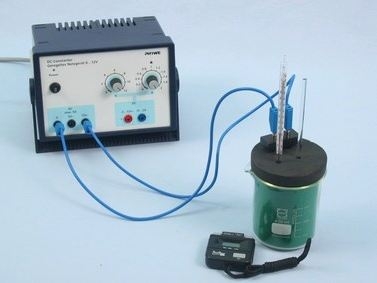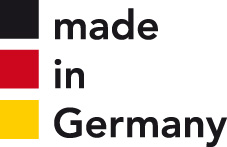|
Heating different quantities of water
Principle
Different quantities of water are heated with a heating coil in
a calorimeter. The quantities of water were chosen to match the
size of the calorimeter (100 ml, 150 ml, 200 ml) and are directly
related to each other so that the following becomes obvious:
the greater the quantity of water, the longer it must be heated.
Or: for the same heat energy the temperature increase is inversely
proportional to the quantity of water. The water is heated with a
heating coil to ensure that all three experimental runs are
conducted with the same calorific input. If a butane burner with an
equally large flame were to be used for each run, this requirement
would generally not be fulfilled since the temperatures of - e.g. -
the support ring, the wire gauze and the beaker have an influence
on the measuring results.
Benefits
- Own construction of a calorimeter deepens the understanding
- Student-suitable experiment descriptions with reports available
Scope of delivery
|
Lid for student calorimeter
|
04404-01
|
1
|
|
Agitator rod
|
04404-10
|
1
|
|
Heating coil with sockets
|
04450-00
|
1
|
|
Felt sheet, 100 x 100 mm
|
04404-20
|
2
|
|
Beakers, Boro, low form, various sizes
|
46054-00
|
1
|
|
Beakers, Boro, low form, various sizes
|
46055-00
|
1
|
|
Erlenmeyer flasks, Boro, wide neck, various sizes
|
46152-00
|
1
|
|
Pipettes with rubber cap, various sizes
|
64701-00
|
1
|
|
Graduated cylinders, plastic, various sizes
|
36629-01
|
1
|
|
Students thermometer, -10...+110°C, l = 230 mm
|
38005-10
|
1
|
|
Digital stopwatch, 24 h, 1/100 s and 1 s
|
24025-00
|
1
|
|
Connecting cable, 32 A, blue, various lengths
|
07361-04
|
2
|
|
PHYWE Power supply, 230 V,DC: 0...12 V, 2 A / AC: 6 V, 12 V, 5 A
|
13506-93
|
1
|
|



